Music & Fiction - Harmony
Harmony is two or more notes played or sung in combination at the same time, and usually it describes a combination that comes into a pleasing musical resonance. Now, as a vocalist, I will say that there are few things, to me, sweeter than a single great voice singing a great melody line with passion and power. That all sounds maudlin, but there you go.
However, it’s also pretty dang cool when multiple voices get together to sing and harmonize. I suppose the most obvious example of this is barbershop music. I’m not a particular fan of this, except when it’s used to great comedic effect:
But I will say this: I have incredible respect for the guys who can do this well. It’s not just mastery of one’s own voice and range and all the other elements of good singing, but then applying it at the same time with other vocalists so that it sounds absolutely uniform. It’s really pretty amazing.
What, then, does that (or could that) have to do with good fiction writing. Well, I suppose the analogy could run down many paths, but the one I like best is the idea that a novel—in particular one that stands a better chance of becoming widely read and hitting a variety of what you might call “notes” in your readers—has multiple principle characters with their own plotlines that will ultimately relate to each other, if only in the novel’s resolution. (Whew, that was a mountainous sentence!) Let me ‘splain.
While not a rule by any means, in general, blockbuster novels have multiple main characters. The multiplicity of voices gives the novel more texture and depth because these multiple voices have their own history and motivation, their own “timbre,” if you will, and they’re singing their own notes. Now, in our metaphor here, they’re all a part of the same composition or song, but the melodies they’re singing—their voices—are unique. And when you are reading them together—meaning in alternating chapters or somesuch—you have, as a reader, the experience of the “full” story coming slowly together.
As one way to see how multiple viewpoint characters may map out against an entire book, check out this plot threads work for Towers of Midnight, the new Wheel of Time novel, which you can find at http://encyclopaedia-wot.org/books/tom/index.html
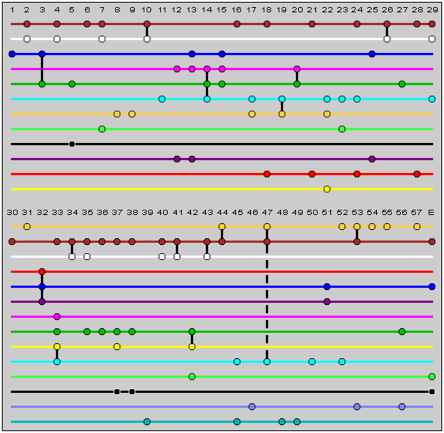
The numbers represent the chapters.
Brown = Perrin
White = Galad
Blue = Rand
Magenta = Nynaeve
Green = Egwene
Cyan = Elayne
Orange = Mat
Light Green = Lan
Black = The Forsaken
Light Blue = The Black Tower
Dark Magenta = Min
Red = Rodel Ituralde
Yellow = Gawyn
Dark Cyan = Aviendha
Part of the value in this kind of view is seeing how multiple characters intersect in the time of the story, how much “screen time” each is getting to tell their particular piece of the novel, and like that.
On the music side of the analogy, one "property" of harmony is "vertical profile" which adds sonic "depth" to music. The effect of multiple, different tones sounding at the same moment in time creates the sense of greater mass and intensity of sound as compared to the effect of the sound of a single note; this vertical profile of multiple tones is typically called a chord. Chords are constructed from low to high tones. The lowest tone of a chord is known as the root and all other chordal tones are built higher in pitch from this tone. Harmony occupies the sonic "space" below melody.
What’s cool about that is, as we look at the metaphorical relationship between fiction and music, most often a novel has a central or main character (the melody), even when there are other plots/characters/voices. These other characters/notes are of significant but lesser importance, kind of like “the space below melody” (where melody is the main voice/character). Make sense? Maybe a word cloud can help drive the point home, where you can see a bit about where a character factors in terms of being mentioned in Alice in Wonderland.

Now, a lot of folks do not know that many world cultures employ only melody in their music—meaning no harmony. Western music also began as a melodic music only (or in book terms, a single viewpoint novel). It was not until the Renaissance period that harmony was introduced as a basic element in the music of the West. As a basic element of music, harmony continued to evolve in complexity until the beginning of the 20th century in the West. In fiction, however, multi-viewpoint story-telling goes back a ways. Early romantic literature surely did this; so, we’re talking well over 150 years.
But great novelists will often find not only multiple plot threads, but ways to have one plot resonate with what’s happening in another unrelated plot, these voices thus harmonizing, so to speak. A couple of novels I think do this pretty well are Dan Simmons’ HYPERION and FALL OF HYPERION. This science fiction duology is something of a retelling of Chaucer’s Canterbury tales, but in an ultra-cool science-fictiony way. And as you go along, you begin to see how the tales of the disparate travelers aren’t quite so disparate, and that taken together, they amount to a rather powerful chorus.
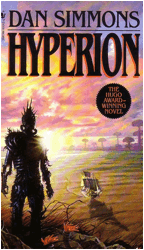
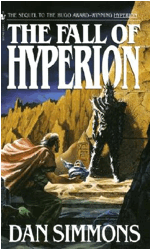
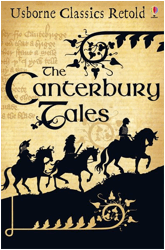
Okay, so I’m taxing the metaphor, but you take my meaning.
The interesting thing, then, about harmony is that it can occur with a great variety of notes. By which I mean, it might be two voices, or three . . . or ten. Of course, taken to preposterous proportions, you’d simply be playing all the notes and hear nothing but a wall of sound. That might have a single knockout punch type of effect as a sonic blast, but it’s not something you want to listen to, and wouldn’t be something worth reading, either—like reading a hundred lines from a hundred characters and trying to hear anything distinct or meaningful from the din. Crazy.
But within reason, multiple voices adds increasing layers of possible chords, right, and that will necessarily provide nuances to the harmonics you can create. I think here about, say, George R.R. Martin and the stunning number of characters in his Song of Ice and Fire series. A quick look at the family trees in the appendix will give you a picture at what Martin has done here. And he’s given a great many of these characters their own powerful voice. It is, to my mind, much of the reason why the series is so beloved. Martin has a lot of other tools in his writer toolbox, but perhaps chief among them is his ability to sing with multiple voices and thus create these kinds of narrative harmonies. For the Martin-uninitiated, there are the several noble houses (Greyjoy, Stark, Lannister, etc., and the kings and nobles of each); the interplay of politics and human relationships is simply brilliant.
Now, assuming you’ve got the chops (like Martin) to write multiple voices, and that the melodies they’re singing have some relationship to one another—thus ensuring that the novel has some cohesion, right? else what you’ve got is a collection of short (or at least shorter) stories—then the further nuance in this use of harmony in fiction is note selection.
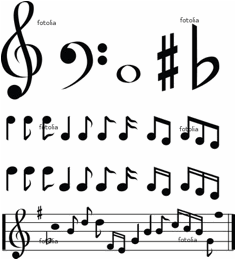
Key, duration, pitch, etc . . . Ah, cool stuff, this. What it means is that, well, suppose you’ve got three singers all singing notes in harmony. They could each sing a third above the other, and thus create a major triad. It’s a bright, happy, familiar sound. It’s pleasing and understandable and underpins all kinds of stories.
However, if that middle guy sings a half-step down, the harmonic chord created becomes a minor chord, and sounds like something darker and more mysterious, menacing even. The whole of the harmony created is changed on the basis of one note.
Chord quality is closely connected to emotional "mood" in music. The "mood quality" of the four triad sizes might be described as: major equals confident, triumphant; minor equals somber, pensive; diminished equals tense, restless, introverted; augmented equals energetic, restless, extroverted. This type of musical "psycho-analysis" is very subjective and serves here only as a general guide to an introductory understanding of music. And while in the scales of Western music there are seven different general interval distances (2nds, 3rds, 4ths, 5ths, 6ths, 7ths, octaves) and four different specific interval qualities - major, minor, diminished, augmented, I won’t go into all the specifics of how these might related specifically to novel “moods.” (Though, if you catch me in a hotel bar some night, I’d be glad to. J) The main point is that the use of additional notes in various combinations changes the sound of the whole. As a writer, selecting the voices of your viewpoint character likewise has a definite effect on the story in its entirety.
If you follow this through to its awesome conclusion, what you get is the idea that based on the stories/plots of the characters you write into your multi-viewpoint novel, the whole becomes a sound that is more than a sum of its parts.

[Frankenstein, too, is more than the sum of his parts, right?]
I love this idea.
I used this in the first novel I ever wrote. Briefly, it’s the tale of a Vietnam veteran whose life is hollow in the aftermath of the war. His estranged best friend has found some happiness in reading and a friendship with a bookstore owner. Then, I counterbalance all this with the story of two boys who are struggling with the vicissitudes of childhood bullies (and for one of the boys, a single mother whose turned to small-town prostitution to make ends meet); and I also throw in the slow, menacing walk of a dark man up the dry highways of man . . . on his way to this small town to claim the last soul needed in an epic, quiet battle. Of course, my hollow man is the soul the dark man is coming to claim, thus the confrontation I set up.
In choosing the many characters whose point of view I could write from to tell the story above, I had lots of options. I could have chosen to write from the viewpoint of the town pastor (he’s in some of the scenes) or from the prostitute-mother’s POV (I actually do a few limited scenes from her POV, but not as a major plot thread) or from that of a ghost that shows up to help the boys solve a mystery that has bearing on the climactic end. I could have made any of these work, and each would have given the story a unique and different “sound.” The choices I made in terms of the plot threads and the character voices to use ultimately gave the book the harmonies it currently has: which includes friendship between a maladjusted vet and an estranged friend; the friendship of two ten-year-olds—one with hope and brains, and the other with despair and brawn; and the dark meanderings of the figure who walks through dry places, seeking rest, but finding none. Thus my title: WALKING THROUGH DRY PLACES.
It’s a horror novel rather in the tradition of Stephen King—a novelist who does harmony better than most. I think about King books like IT, which not only have multiple viewpoints, but shows those same characters in periods of life separated by 27 years. Those voices are then resonant even with themselves, since they’re the same, but changed by almost three decades of life experience (as well as the effects of dealing with the evil that lurks in the Derry storm drains.) King has just upped the ante, or, in the vein of this article, he’s added overtones.
An overtone, technically, is any frequency higher than the fundamental sound you hear when a note is sung or played. But most often, especially in vocal music, you’re not just hearing a partial tone, but a harmonic. One way the vocalist does this is by manipulation of the resonant cavities of the mouth, larynx, and pharynx. Essentially, it allows the singer to seemingly create more than one pitch at the same time. One of these tones sounds like a drone, very much like the bagpipes.
The reason I liken King’s work in IT to overtones is because each voice/character he creates and writes about winds up singing multiple notes—due largely to the plot device of having children return later in their lives to fight “It.” Another interesting take on this, in my warped mind, is the convention of the double in horror literature, most celebrated in The Strange Case of Dr. Jekyll and Mr. Hyde—dark harmonies to be sure. You might not be surprised to learn that I wrote a thriller novel that turns sharply on the ideas Robert Louis Stevenson explored in this great story. My novel is entitled To Kyll and Hyde, and what I did was to essentially write both sides of the protagonist/antagonist story, getting inside the point of view of each, showing some of the similarities in the backstories of these characters. You can, I imagine, see at this point the dark harmonies I was going for, as I attempt to stand on the shoulders of giants.
Of course, I’ve clipped in one of the images associated with Jekyll and Hyde that is from the musical version—what could be more apropos, right?
Now, to finish this little article off, let’s close with some great tunes that have great harmonies. Have a listen to these, and tell me if you don’t agree:
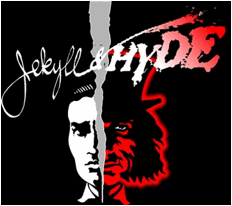

And darker . . .
And a bit brighter . . .
And the classic (again by Kansas), but not the embedded vid, just the link, in case you’re feelin’ it: https://youtu.be/2X_2IdybTV0!!
So there you go: Harmony. You know what it is when you hear it. And now, with any luck, you have a good sense of how to get after it in your fiction.
Cheers, my bruthuhs and sistuhs!





